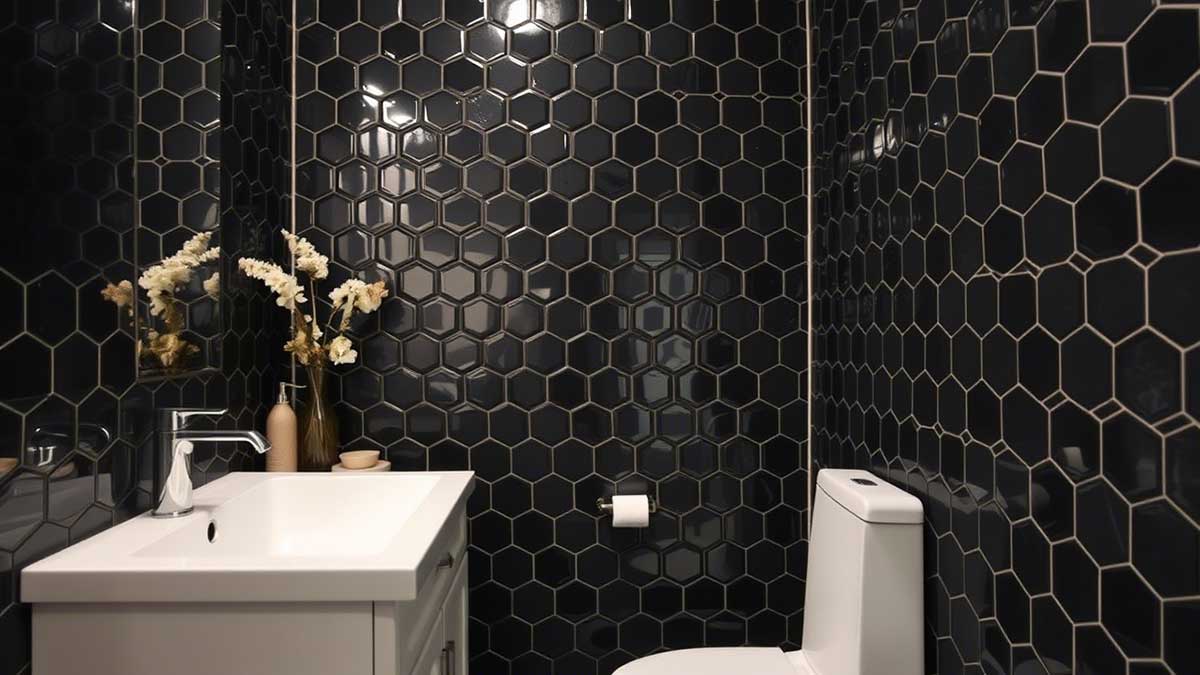Designing a space with limited natural light can be challenging, but the right tile choices can dramatically brighten and transform even the darkest corners of your home. Whether it’s a basement bathroom, an interior hallway, or a windowless kitchen, choosing the proper tiles for dark rooms is key to maximizing light, creating visual interest, and making the space feel inviting.
In this comprehensive guide, we’ll explore how to use color, texture, pattern, and finish to your advantage when selecting tiles for dark or low-light environments.
1. Choose Light and Reflective Tile Colors
The most effective way to counteract the darkness in a room is by using light-colored tiles. Shades of white, cream, light gray, or even pastel tones can reflect available light and help make the space feel brighter.
Top recommendations:
- Glossy white ceramic tiles
- Cream or ivory porcelain tiles
- Pale gray stone-look tiles
These light hues bounce ambient light around, which is especially useful in rooms with no windows. When selecting tiles for dark rooms, always consider how much light the tile surface will reflect.
2. Use Glossy or Polished Finishes
Tiles with a glossy or polished surface naturally reflect more light than matte finishes. This extra reflectivity can make a noticeable difference in how bright a room feels.
Ideal choices:
- Polished marble tiles
- Glossy ceramic wall tiles
- High-gloss porcelain floor tiles
Glossy tiles for dark rooms not only improve brightness but also add a touch of elegance and depth to the overall design.
3. Embrace Glass and Metallic Tiles as Accents
Glass tiles are an excellent way to amplify available light in dark areas. They reflect both natural and artificial light beautifully. Similarly, metallic tiles or accents (like stainless steel or brushed brass mosaics) can give a sophisticated, light-catching effect.
Where to use:
- Kitchen backsplashes
- Shower walls
- Accent borders or niches
Incorporating glass or metallic tiles for dark rooms can turn a gloomy corner into a visually striking focal point.
4. Go Large with Tile Size
Larger tiles have fewer grout lines, resulting in a cleaner and less cluttered appearance. In dark spaces, this can help make the room feel more open and spacious.
Best sizes:
- 12×24 inch porcelain tiles
- Large-format stone-look tiles
Larger tiles for dark rooms also provide a more seamless, unified look, especially when paired with a matching grout color.
5. Lay Tiles in a Strategic Pattern
Creative tile layouts can enhance the sense of space and direction in a room. Consider using diagonal, herringbone, or vertical patterns to guide the eye and give the illusion of a larger area.
Examples:
- Diagonal floor layouts to widen a narrow hallway
- Vertical tile placement in showers to add height
Strategically patterned tiles for dark rooms can add visual interest while also subtly altering how the space is perceived.
6. Use Light-Colored Grout for Contrast
If you’re using light tiles, pairing them with a slightly lighter or contrasting grout can enhance their reflective effect and add texture. White or light gray grout keeps the look clean and cohesive.
However, avoid dark grout lines unless you want to create a bold, graphic pattern — which may not suit very dark rooms.
Tile + grout combos to try:
- White tiles with light gray grout
- Beige tiles with cream grout
This approach ensures that your tiles for dark rooms continue to serve both functional and aesthetic goals.
7. Incorporate LED Lighting Around Tiles
Tiles can only reflect the light they receive. To make the most of your tile design, use hidden or recessed LED lighting in key areas like under cabinets, behind mirrors, or within niches. The interplay of tile surfaces and strategic lighting can dramatically elevate a dark room.
Lighting ideas:
- Under-cabinet strips for kitchens
- LED strips behind wall-mounted mirrors
- Recessed lighting in showers
When paired with reflective tiles for dark rooms, even minimal lighting can create a surprisingly bright effect.
8. Consider Patterned or Textured Tiles
Subtle patterns or textures can help break up visual monotony and add interest in rooms with limited light. Look for lightly embossed tiles or tiles with subtle geometric designs to enhance style without making the room feel busy.
Try these:
- 3D ceramic wave tiles
- Light-colored encaustic-look tiles
Just be careful not to go overboard with very busy patterns, which can make dark rooms feel more cramped.
9. Avoid These Common Mistakes
When choosing tiles for dark rooms, be aware of these common pitfalls:
- Using dark matte tiles throughout: This absorbs light and can make the space feel like a cave.
- Overly busy mosaics: These can overwhelm a small, dimly lit room.
- Lack of contrast: A totally monotone design with no texture or detail can feel flat and dull.
Smart tile design in dark rooms means creating contrast, reflection, and balance.
10. Real-Life Design Inspiration
Basement Bathroom A basement bathroom without windows was transformed using glossy white subway tiles and a vertical stacked pattern. A floating vanity with under-lighting and glass tile accents helped reflect LED lighting and make the space feel larger.
Windowless Kitchen Nook In a galley-style kitchen, white marble-look porcelain tiles were used for the floor, with a high-gloss ceramic backsplash. A metallic tile strip added brightness and sophistication.
These examples show how tiles for dark rooms can not only brighten a space but also elevate the entire design.
Final Thoughts
Designing with tiles for dark rooms requires a thoughtful balance of color, finish, size, and layout. By focusing on light-reflective surfaces, strategic lighting, and minimal grout lines, even the darkest spaces can become bright, stylish, and welcoming.
Whether you’re updating a basement, powder room, or interior hallway, the right tile design can completely transform how the space feels. Let your tile choices work with your lighting to create a warm and visually appealing environment — no windows required.

